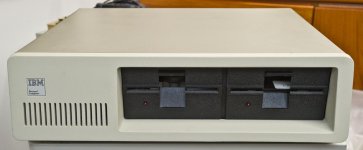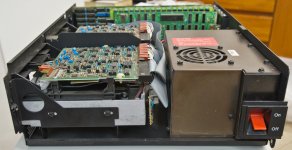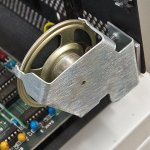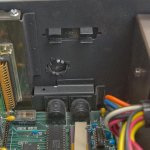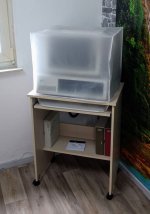For reference, I came across this note at the IBM site...
https://www.ibm.com/common/ssi/rep_c...068/index.html
Basically it points out the substantial changes to the 5150 available around March/April of 1983. I've been calling it the "Model B" - but IBM used these terms: "The new Models 114, 164, and 174 replace the IBM Personal Computer Models 14, 64, and 74, which are withdrawn from marketing, and the Model 104 replaces the Model 1, which was withdrawn from marketing earlier." Yet there is no actual marking inside or outside to indicate these models? (so it's more of a "build configuration"?)
Lots of interesting things at the end of the article, for prices (yeah, those disk drives weren't cheap!). While the top of the article talks about the new 256KB model 5150, it's not clear from the prices at the end (all the 5150 models are listed with 64KB) -- but there is that 350$ 256KB RAM package (is that meaning filling up the banks on the mainboard? it's not talking about some RAM expansion card, right?)
Which BTW, did they keep making/selling 5150s by '83 as a lower price point option? (they're basically an XT without a HDD? or was the XT clocked higher, I can't remember?) Or did they just have lots of extra inventory to sell?
(anyone recall the machine that was used in the movie Electric Dreams? It wasn't an IBM PC - but still, it shows that idea of ordering a PC and then it became self aware, yeah 8-bit A.I., just add alcohol - haha)

